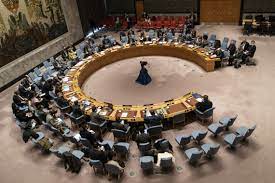
The Impact of Organizations on Society
Organizations play a crucial role in shaping our society and influencing the way we live our lives. From non-profit groups dedicated to social causes to multinational corporations driving economic growth, organizations come in various forms and sizes, each with its unique impact on the world around us.
Driving Change
One of the primary functions of organizations is to drive change. Advocacy groups work tirelessly to raise awareness about important issues such as environmental conservation, human rights, and public health. By mobilizing resources and rallying support, these organizations can push for policy changes and societal reforms that benefit the greater good.
Economic Growth
On the other end of the spectrum, businesses and corporations are instrumental in driving economic growth and creating job opportunities. Through innovation, investment, and entrepreneurship, organizations fuel economic development and contribute to the prosperity of communities around the world.
Community Engagement
Many organizations also play a vital role in community engagement. Local charities, religious groups, and cultural institutions provide essential services and support to those in need within their communities. These organizations foster a sense of belonging and solidarity among community members, creating a network of support that strengthens social cohesion.
Global Reach
In today’s interconnected world, organizations have an unprecedented global reach. International NGOs work across borders to address global challenges such as poverty, climate change, and conflict resolution. By collaborating with governments, businesses, and other stakeholders worldwide, these organizations have the power to effect change on a global scale.
Conclusion
In conclusion, organizations are powerful agents of change that shape our society in profound ways. Whether they are advocating for social justice, driving economic growth, engaging with local communities, or addressing global challenges, organizations have the potential to make a positive impact on the world we live in.
Understanding Organizations: Common Questions and Examples Explained
- What is an organization example?
- What are 5 examples of Organisations?
- What are the 3 types of organizations?
- What are examples of organizations?
- What organization means?
What is an organization example?
An example of an organization is the World Health Organization (WHO), a specialized agency of the United Nations responsible for international public health. The WHO coordinates global efforts to combat diseases, promote healthcare access, and provide emergency response during health crises. As an organization, the WHO exemplifies the importance of collaboration, expertise, and advocacy in addressing public health challenges on a worldwide scale.
What are 5 examples of Organisations?
Organizations come in various forms and serve different purposes, ranging from non-profit organizations dedicated to social causes to multinational corporations focused on economic growth. Five examples of organizations include the United Nations (UN), a global intergovernmental organization promoting international cooperation and peace; Doctors Without Borders, a non-governmental organization providing medical aid in crisis-affected areas worldwide; Apple Inc., a multinational technology company known for its innovative products and services; The Red Cross, an international humanitarian organization offering disaster relief and support to vulnerable populations; and Greenpeace, an environmental NGO advocating for conservation and sustainability. Each of these organizations plays a unique role in society, demonstrating the diverse impact that organizations can have on the world.
What are the 3 types of organizations?
There are three main types of organizations: for-profit organizations, non-profit organizations, and governmental organizations. For-profit organizations aim to generate revenue and make a profit for their owners or shareholders. Non-profit organizations, on the other hand, focus on serving a social or charitable mission without the primary goal of making money. Governmental organizations are entities established by the government to provide public services and regulate various aspects of society. Each type of organization plays a distinct role in shaping our economy, society, and governance structures.
What are examples of organizations?
Organizations encompass a wide range of entities across various sectors and industries. Some common examples of organizations include non-profit organizations like the Red Cross and World Wildlife Fund, which focus on humanitarian aid and environmental conservation respectively. Businesses such as Apple Inc. and Walmart are examples of for-profit organizations that operate in the technology and retail sectors. Government agencies like the Environmental Protection Agency (EPA) and the United Nations are also considered organizations that work to regulate and address global issues. Educational institutions, healthcare providers, religious groups, and community associations are further examples of organizations that serve specific purposes within society.
What organization means?
An organization refers to a structured group of individuals working together towards a common goal or purpose. It can take various forms, such as businesses, non-profit organizations, government agencies, or community groups. Organizations typically have defined roles, responsibilities, and hierarchies to ensure efficiency and coordination among members. Through collaboration and coordination, organizations aim to achieve their objectives effectively and make a meaningful impact in their respective fields.
